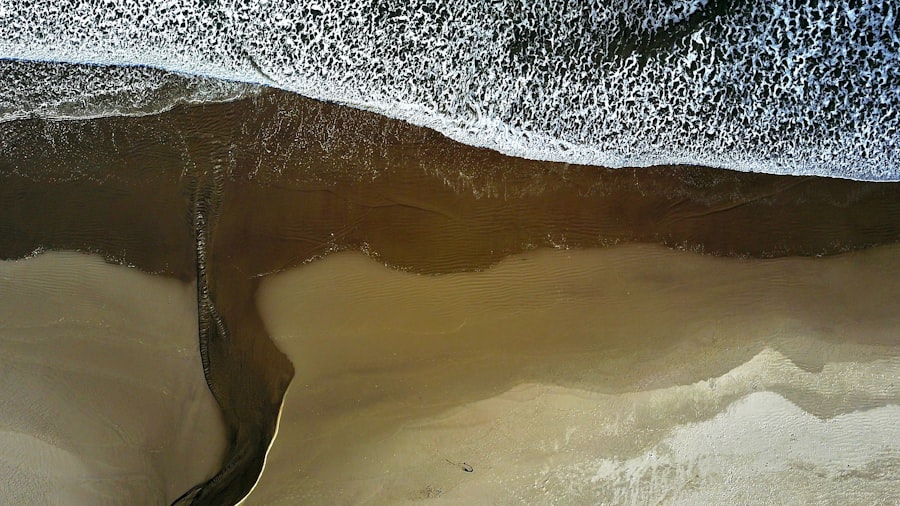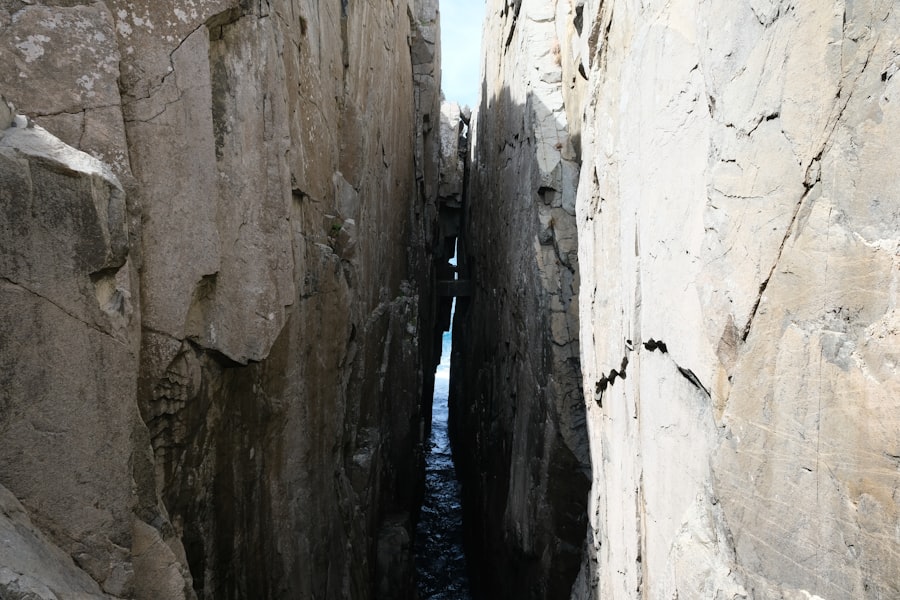The Drake Passage, a body of water that separates South America from Antarctica, is often regarded as one of the most treacherous maritime routes in the world. Named after the English explorer Sir Francis Drake, who navigated these waters in the late 16th century, the passage has become synonymous with adventure and peril. Stretching approximately 600 kilometers (370 miles) at its widest point, it serves as a critical conduit for vessels traveling to and from the Antarctic region.
The passage is not merely a geographical feature; it embodies the spirit of exploration and the challenges faced by those who dare to traverse its tumultuous waters. For centuries, the Drake Passage has captured the imagination of sailors, scientists, and adventurers alike. Its unpredictable weather patterns and powerful currents have made it a focal point for maritime studies and a rite of passage for those seeking to explore the icy wilderness of Antarctica.
As travelers embark on journeys across this formidable stretch of ocean, they are often met with awe-inspiring landscapes and a profound sense of connection to the natural world. The Drake Passage is more than just a route; it is a gateway to one of the last great frontiers on Earth.
Key Takeaways
- The Drake Passage is a body of water between South America’s Cape Horn and the South Shetland Islands of Antarctica.
- The Southern Ocean’s geography and climate are characterized by strong winds, large waves, and cold temperatures, making it one of the most challenging maritime environments in the world.
- The Drake Passage has a notorious reputation for its rough seas and unpredictable weather, earning it the nickname “The Drake Shake.”
- The rough seas of the Drake Passage are caused by the convergence of the Antarctic Circumpolar Current and the South American continent, creating a unique and turbulent oceanic environment.
- Crossing the Drake Passage is a once-in-a-lifetime experience that offers the opportunity to witness incredible wildlife and natural wonders, but it requires careful planning and preparation for the challenging conditions.
The Geography and Climate of the Southern Ocean
The Southern Ocean, which encompasses the waters surrounding Antarctica, is characterized by its unique geography and climate. This ocean is defined by the Antarctic Convergence, where cold, nutrient-rich waters from the south meet warmer waters from the north. This convergence creates a dynamic ecosystem that supports a diverse array of marine life.
The Southern Ocean is also home to numerous islands, including South Georgia and the South Shetland Islands, which serve as vital breeding grounds for various species of seabirds and seals. The climate of the Southern Ocean is notoriously harsh, with strong winds and rapidly changing weather conditions. The region experiences extreme cold, particularly during the winter months when temperatures can plummet well below freezing.
However, summer brings a brief respite, with longer days and milder temperatures that attract researchers and tourists alike. The interplay between the ocean currents and atmospheric conditions creates a unique environment that is both beautiful and challenging, making it an area of great interest for scientists studying climate change and marine ecosystems.
The Notorious Reputation of the Drake Passage

The Drake Passage has earned its reputation as one of the most feared stretches of water due to its notoriously rough seas. Sailors have long recounted tales of towering waves and fierce storms that can arise with little warning. The combination of strong westerly winds, known as the Roaring Forties, and the meeting of different ocean currents creates conditions that can be both exhilarating and terrifying.
Many who have crossed the passage describe it as a test of endurance, where even experienced mariners must remain vigilant. This reputation has not deterred adventurers; rather, it has drawn them in. The challenge of navigating the Drake Passage has become a badge of honor for many travelers.
Those who successfully complete the crossing often share their stories with pride, recounting moments of both fear and exhilaration. The passage serves as a reminder of nature’s power and unpredictability, reinforcing the idea that exploration comes with inherent risks.
The Science Behind the Rough Seas
| Topic | Details |
|---|---|
| Wave Height | Measured in meters |
| Wave Frequency | Number of waves per minute |
| Wind Speed | Measured in knots |
| Water Temperature | Measured in degrees Celsius |
The scientific explanation for the tumultuous conditions in the Drake Passage lies in its unique geographical features and oceanographic processes. The passage is situated between two major ocean currents: the Antarctic Circumpolar Current and the South Atlantic Current. These currents interact in complex ways, leading to significant variations in wave height and sea state.
The narrowness of the passage also contributes to its roughness; as water is funneled through this constricted space, it accelerates, creating larger waves. Meteorological factors play a crucial role in shaping the conditions within the Drake Passage as well. The region is subject to frequent storms that can develop rapidly due to the clash between cold polar air and warmer air masses from lower latitudes.
Understanding these scientific principles is essential for those planning to cross the passage, as they highlight both the beauty and danger inherent in this remarkable body of water.
The Experience of Crossing the Drake Passage
For many travelers, crossing the Drake Passage is an unforgettable experience that combines adventure with introspection. As vessels set sail from Ushuaia, Argentina, passengers often feel a mix of excitement and trepidation. The journey typically takes around two days, during which travelers are treated to breathtaking views of the surrounding ocean and sky.
However, as they enter the passage itself, they may encounter rough seas that test their resolve. The experience can vary greatly depending on weather conditions; some may find themselves in calm waters while others face towering waves. Regardless of the conditions, passengers often bond over shared experiences, forming connections that transcend geographical boundaries.
Many find solace in the beauty of their surroundings, with opportunities to spot seabirds and marine life adding to the sense of wonder. For those who embrace the challenge, crossing the Drake Passage becomes a transformative journey that leaves lasting memories.
Safety Precautions for Crossing the Drake Passage

Given its reputation for rough seas, safety precautions are paramount for anyone planning to cross the Drake Passage. Modern vessels are equipped with advanced technology designed to navigate challenging conditions, including stabilizers that help reduce motion sickness and improve comfort on board. Additionally, experienced crews are trained to handle emergencies and adverse weather situations, ensuring passenger safety throughout the journey.
Travelers are also encouraged to take personal precautions before embarking on their voyage. This includes packing appropriate clothing for varying weather conditions, as temperatures can fluctuate dramatically during the crossing. It is advisable to bring seasickness medication or remedies to mitigate discomfort during rough patches.
By being prepared and informed about potential challenges, passengers can enhance their experience while prioritizing their safety.
Wildlife and Natural Wonders of the Southern Ocean
The Southern Ocean is renowned for its rich biodiversity and stunning natural wonders. It serves as a critical habitat for numerous species of marine life, including whales, seals, penguins, and various fish species. The nutrient-rich waters support vast populations of krill, which form the foundation of the food web in this ecosystem.
As travelers cross the Drake Passage, they often have opportunities to witness these incredible creatures in their natural habitats. In addition to its wildlife, the Southern Ocean boasts breathtaking landscapes characterized by towering icebergs and dramatic coastlines. Glaciers calving into the sea create mesmerizing displays of nature’s power, while remote islands offer glimpses into untouched ecosystems.
For many explorers, these sights evoke a sense of wonder and appreciation for the planet’s natural beauty.
Tips for Navigating the Drake Passage
Successfully navigating the Drake Passage requires careful planning and preparation. Travelers should consider booking their journey during the summer months when weather conditions are generally more favorable. Researching different cruise operators can also provide insights into their safety records and onboard amenities, ensuring a comfortable experience.
Once on board, passengers should take advantage of educational opportunities offered by crew members or naturalists who provide valuable information about the region’s ecology and history. Engaging with fellow travelers can enhance the experience as well; sharing stories and tips can foster camaraderie among those embarking on this shared adventure. Finally, maintaining an open mind and a sense of humor can go a long way in making the crossing enjoyable—after all, navigating unpredictable waters is part of what makes this journey so memorable.
Historical Expeditions and Discoveries in the Southern Ocean
The Southern Ocean has been a site of significant historical expeditions that have shaped our understanding of this remote region. Early explorers such as James Cook ventured into these waters in search of new lands and resources, paving the way for future scientific research. Cook’s voyages not only expanded geographical knowledge but also contributed to our understanding of ocean currents and weather patterns.
In more recent history, scientific expeditions have focused on studying climate change impacts on polar regions and marine ecosystems. Researchers have conducted extensive studies on krill populations and their role in global carbon cycling, highlighting the importance of this region in understanding broader environmental issues. These historical explorations have laid the groundwork for ongoing research efforts aimed at preserving this fragile ecosystem for future generations.
The Future of Southern Ocean Exploration
As interest in climate change continues to grow, so too does attention on the Southern Ocean’s role in global environmental systems. Future exploration efforts will likely focus on understanding how changes in temperature and ice melt impact marine life and ocean circulation patterns. Advancements in technology will enable researchers to gather more precise data about this remote region, leading to better-informed conservation strategies.
Moreover, increased tourism to Antarctica raises questions about sustainable practices in this delicate environment. Balancing exploration with preservation will be crucial as more travelers seek to experience the wonders of the Southern Ocean firsthand. Collaborative efforts between scientists, policymakers, and tourism operators will be essential in ensuring that future generations can continue to appreciate this remarkable part of our planet.
The Drake Passage as a Rite of Passage
Crossing the Drake Passage is more than just a journey; it is a rite of passage for adventurers seeking to connect with one of Earth’s last frontiers. The challenges posed by its rough seas serve as a reminder of nature’s power while offering opportunities for personal growth and reflection. As travelers navigate these tumultuous waters, they become part of a long tradition of explorers who have dared to venture into unknown territories.
The experience fosters a deep appreciation for both the beauty and fragility of our planet’s ecosystems. As individuals return from their journeys across the Drake Passage, they carry with them stories that inspire others to explore responsibly and advocate for environmental stewardship. Ultimately, this remarkable body of water stands as a testament to human resilience and curiosity—a symbol of adventure that beckons all who seek to discover what lies beyond their horizons.
The Drake Passage is notorious for its rough seas, often challenging even the most seasoned sailors with its unpredictable weather and strong currents. For those interested in learning more about the geographical and environmental factors that contribute to the passage’s turbulent nature, a related article can be found on MyGeoQuest. This resource provides insights into various geographical phenomena, including the unique conditions of the Drake Passage. To explore more about this topic, you can visit the article on MyGeoQuest’s sample page.
WATCH NOW! Drake Passage: Earth’s Deadliest Waters Revealed
FAQs
What is the Drake Passage?
The Drake Passage is the body of water between the southern tip of South America and the northern tip of the Antarctic Peninsula. It connects the Atlantic and Pacific Oceans.
Is the Drake Passage rough?
Yes, the Drake Passage is known for its rough and unpredictable seas due to the strong westerly winds and the convergence of the Antarctic Circumpolar Current and the South Pacific Current.
Why is the Drake Passage rough?
The Drake Passage is rough due to the strong westerly winds, the convergence of ocean currents, and the lack of any significant landmass to break up the waves, leading to rough and unpredictable seas.
Are there any specific times of the year when the Drake Passage is rougher?
The Drake Passage can be rough at any time of the year, but it is generally considered to be roughest during the austral winter (June-August) when the winds are strongest and the seas are at their most turbulent.
Are there ways to mitigate the roughness of the Drake Passage?
Some ways to mitigate the roughness of the Drake Passage include choosing a larger, more stable vessel, taking medication for seasickness, and choosing a time of year when the seas are generally calmer, such as during the austral summer (December-February).
